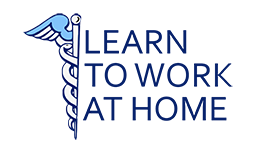Understanding the Profession of Medical Transcription
Medical Transcription has existed since the beginning of medical care and research. Ancient cave writings attest to the earliest forms of healthcare documentation. While the medium changed from metal plates to clay tablets, to hieroglyphs on temple walls, to papyrus, to parchment, to paper, and most recently to electronic files, the reasons for maintaining records have always been the same-to record an individual’s health care and the achievements in medical science.
Until the twentieth century, physicians served as both providers of medical care and scribes for the medical community. After 1900, when standardization of medical data became critical to research, medical stenographers replaced physicians as scribes, taking their dictation in shorthand. The advent of dictating equipment made it unnecessary for physician and scribe to work face-to-face, and the career of medical transcription began. As physicians came to rely on the judgment and reasoning of experienced medical transcriptionists to safeguard the accuracy and integrity of medical dictation, medical transcription evolved into a medical language specialty. Now, at the dawn of the twenty-first century, medical transcriptionists are using speech recognition technology to help them create even more documents in a shorter time. Medical transcription is one of the most sophisticated of the allied health professions, creating an important partnership between healthcare providers and those who document patient care.
Medical Transcriptionists as Professionals
The industry is moving toward electronic health records, allowing storage of an individual’s health history so that it can be accessed by physicians and healthcare providers anywhere.
Physicians and other healthcare providers employ state-of-the-art electronic technology to dictate and transmit highly technical and confidential information for their patients. These medical professionals rely on skilled medical transcriptionists to transform spoken words into comprehensive records that accurately communicate medical information. Sometimes speech recognition systems are used as an intermediary to translate the medical professional’s dictation into rough draft. The medical transcriptionist then further refines it into a finished document.
Keyboarding and transcription should not be confused. The primary skills necessary for performance of quality medical transcription are extensive medical knowledge and understanding, sound judgment, deductive reasoning, and the ability to detect medical inconsistencies in dictation. For example, a diagnosis inconsistent with the patient’s history and symptoms may be mistakenly dictated. The medical transcriptionist questions, seeks clarification, verifies the information, and enters it into the report.
What does a medical transcriptionist need to know?
Medical understanding is critical for the professional medical transcriptionist. The complex terms used in medicine are unlike the language of any other profession.Medical transcription requires a practical knowledge of medical language, anatomy, physiology, disease processes, pharmacology, laboratory medicine, and the internal organization of medical reports. A medical transcriptionist is truly a medical language specialist who must be aware of standards and requirements that apply to the health record, as well as the legal significance of medical transcripts.
Reports of patient care take many forms, including histories and physical examinations, progress reports, emergency room notes, consultations, operative reports, discharge summaries, clinic notes, referral letters, radiology reports, pathology reports, and an array of documentation spanning more than 60 medical specialties and subspecialties! Thus, the medical transcriptionist, or medical language specialist, must be well versed in the language of medicine.
To prepare for this profession, medical transcriptionists study medical language, including Greek and Latin suffixes, prefixes, and roots biological science, including anatomy and physiology of all body systems and various disease processes, medical science, medical and surgical procedures, involving thousands of instruments, supplies, appliances, and prosthetic devices, pharmacology, laboratory values, correlating laboratory test results with a patient’s diagnosis and treatment, use of medical reference materials and research techniques.
Quality medical transcription also requires above-average knowledge of English punctuation and grammar, excellent auditory skills, allowing the transcriptionist to interpret sounds almost simultaneously with keyboarding, advanced proofreading and editing skills, ensuring accuracy of transcribed material, versatility in use of transcription equipment and computers, since transcriptionists may work in a variety of settings, highly developed analytical skills, employing deductive reasoning to convert sounds into meaningful form.
Why haven’t I heard about medical transcription before?
While medical transcription is among the most fascinating of allied health professions, the general public knows little about those who practice this skill. It was not until 1999 that the US Department of Labor assigned a separate job classification (Standard Occupational Classification #31-9094) so that statistics could be gathered on medical transcriptionists. Before that, transcriptionists were misclassified as typists, word processors, medical secretaries, and dictating machine operators.
Medical transcriptionists work in settings that are usually far removed from the examining rooms, clinics, and hospital floors where health care is provided. Patients rarely have the opportunity to hear about those who transcribe their medical reports, and medical transcriptionists rarely meet the subjects of their work. All healthcare providers rely to some extent on the skills of the medical transcriptionist to provide written documentation of health care. The reports produced by medical transcriptionists are the repository of information concerning medical practice. These reports function as legal documentation and fulfill requirements for insurance reimbursement. They also serve as reference for scientific research.
Where are medical transcriptionists employed?
Medical transcriptionists use their talents in a variety of healthcare settings, including doctors’ offices, public and private hospitals, teaching hospitals, medical transcription businesses, clinics, laboratories, radiology and pathology departments, insurance companies, medical libraries, government medical facilities, rehabilitation centers, legal offices, research centers, veterinary medical facilities, and associations representing the healthcare industry.
Medical transcriptionists work with physicians and surgeons in multiple specialties. They work with pharmacists, therapists, technicians, nurses, dieticians, social workers, psychologists, and other medical personnel. All of these healthcare providers rely on information that is received, documented, and disseminated by the medical transcriptionist. Some transcriptionists choose to work at home as employees of transcription businesses or hospitals. Still others provide services as independent contractors.Qualified medical transcriptionists who wish to expand their professional responsibilities may become quality assurance specialists, supervisors, managers, department heads, or owners of medical transcription businesses. Experienced medical transcriptionists may become teachers, working in schools and colleges to educate future medical transcriptionists.
Is medical transcription a good home-based business?
The transcriptionist working from home must make a significant investment in equipment and reference materials and be willing to make frequent updates to both in order to keep up with rapidly changing technology and terminology. Careful planning and the advice of legal and financial experts are essential to the success of a home-based business.
Medical transcription provides unlimited intellectual challenge and the opportunity to make a unique contribution to quality health care and service. Health care is a rapidly growing industry, and the demand for quality documentation is increasing. The profession provides a high level of job security, and skilled medical transcriptionists may receive a premium for their services. Because their services are in demand, transcriptionists are often able to arrange convenient and flexible work schedules.
Medical transcription is a portable skill that allows for professional and geographic mobility. Age restrictions are seldom found, with great value being placed on the experience and knowledge of the well-seasoned transcriptionist. Medical transcription can be a lifelong, satisfying career, providing the constant challenge of an expanding and advancing technology. The changes occurring in the healthcare industry promise to provide even more challenges to the forward-looking medical transcriptionist.
What are the characteristics of a medical transcriptionist?
Medical transcription professionals are; word specialists, self-starters, perfectionists, independent by nature, and self-disciplined. Medical transcriptionists are also interested in medicine, committed to learning, known to have inquiring minds, able to concentrate for long periods, willing to assist others, able to work with minimal supervision, and dedicated to professional development and achievement.
©2002 American Association for Medical Transcription


 Medical Transcription is the transcribing of audio recordings (dictation) into printed reports. These recordings, usually made by physicians or other healthcare professionals, become part of permanent medical records by way of transcription. Quality transcriptionists are in high demand in today’s workplace as the healthcare industry continues to grow and the insurance industry requires more documented information.
Medical Transcription is the transcribing of audio recordings (dictation) into printed reports. These recordings, usually made by physicians or other healthcare professionals, become part of permanent medical records by way of transcription. Quality transcriptionists are in high demand in today’s workplace as the healthcare industry continues to grow and the insurance industry requires more documented information.